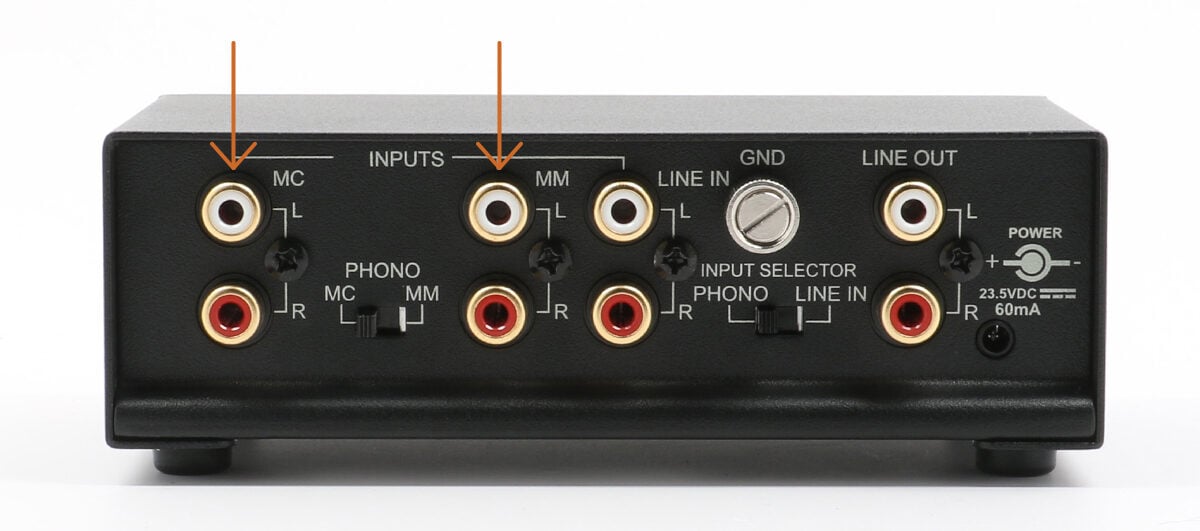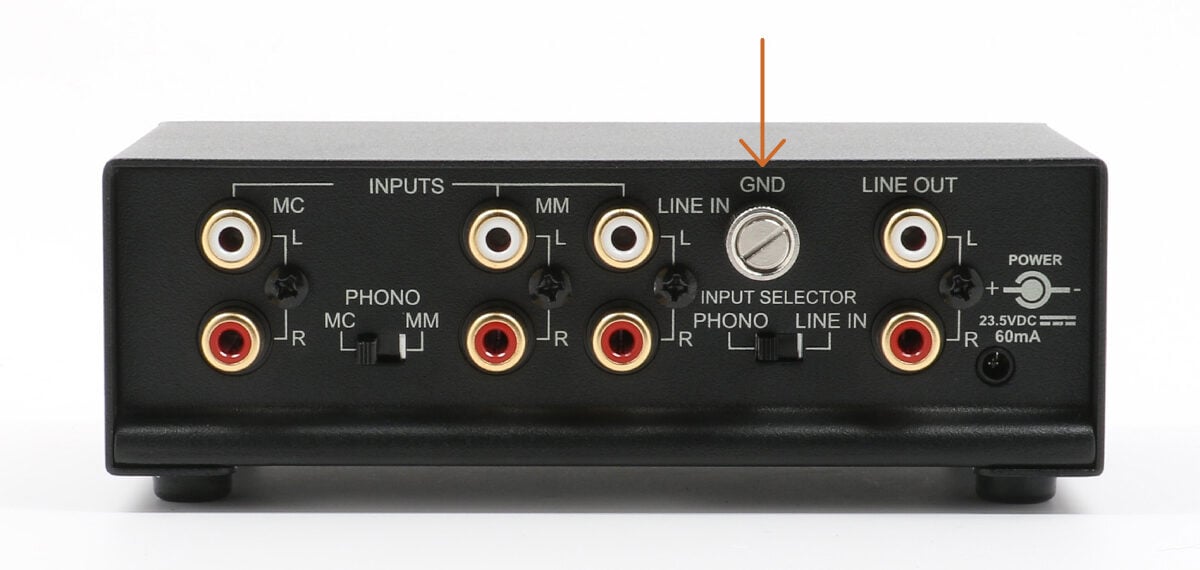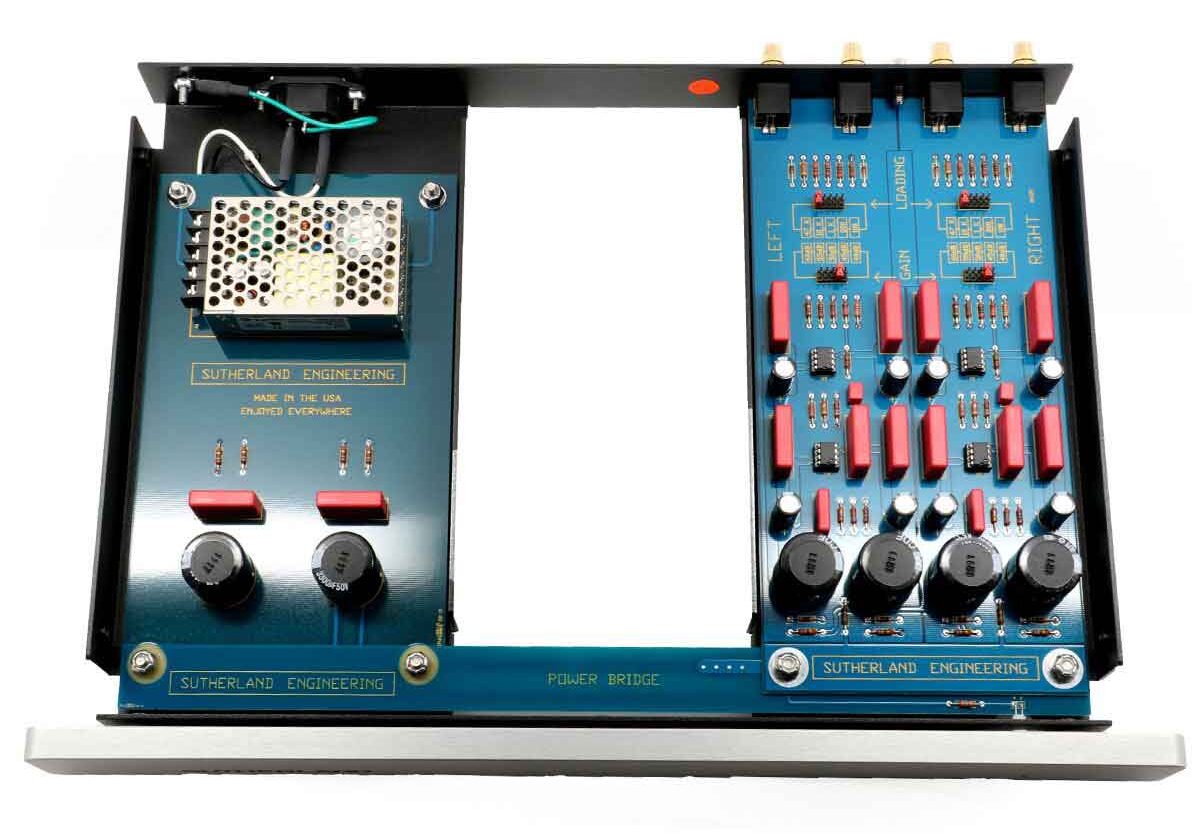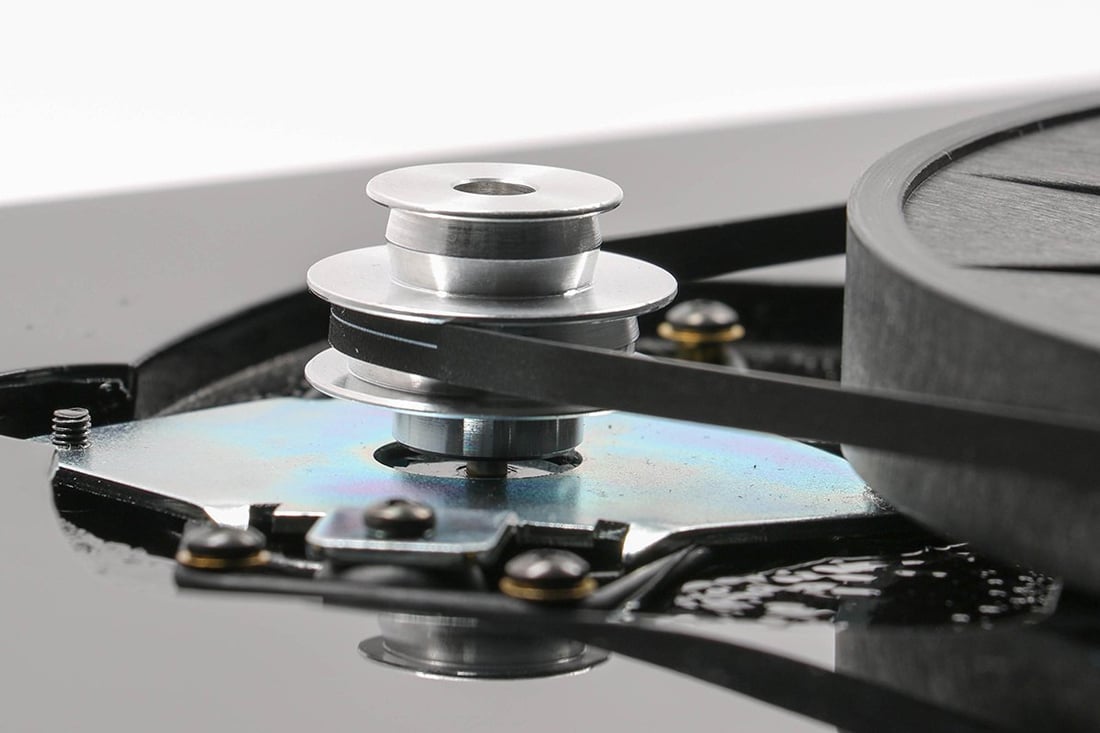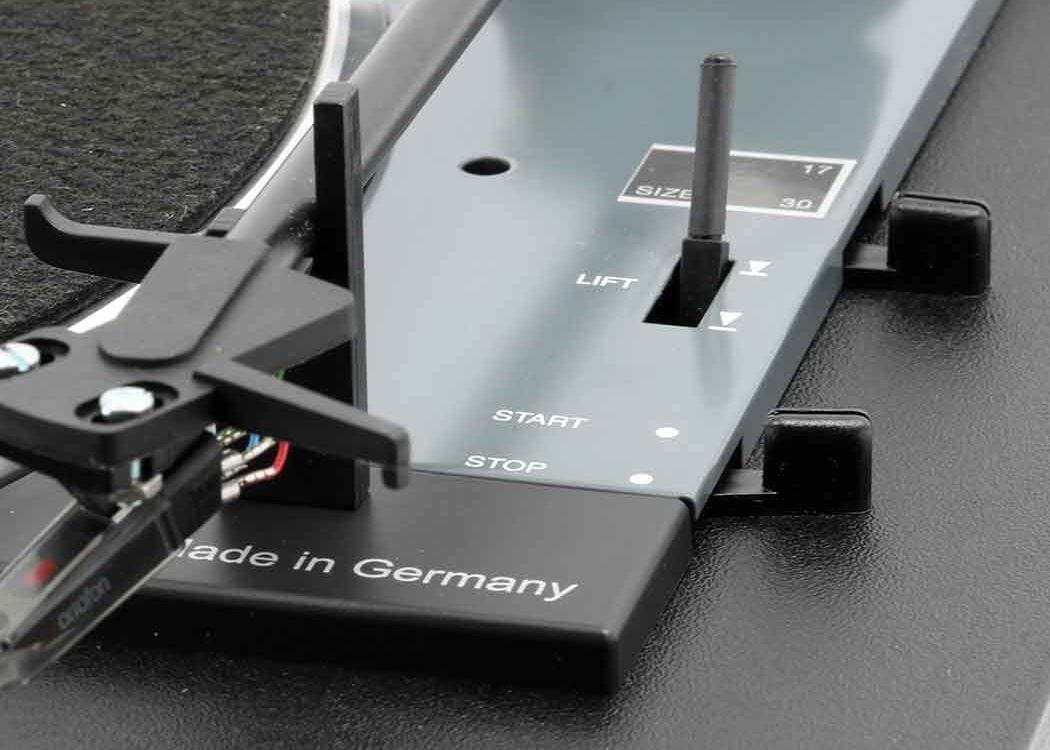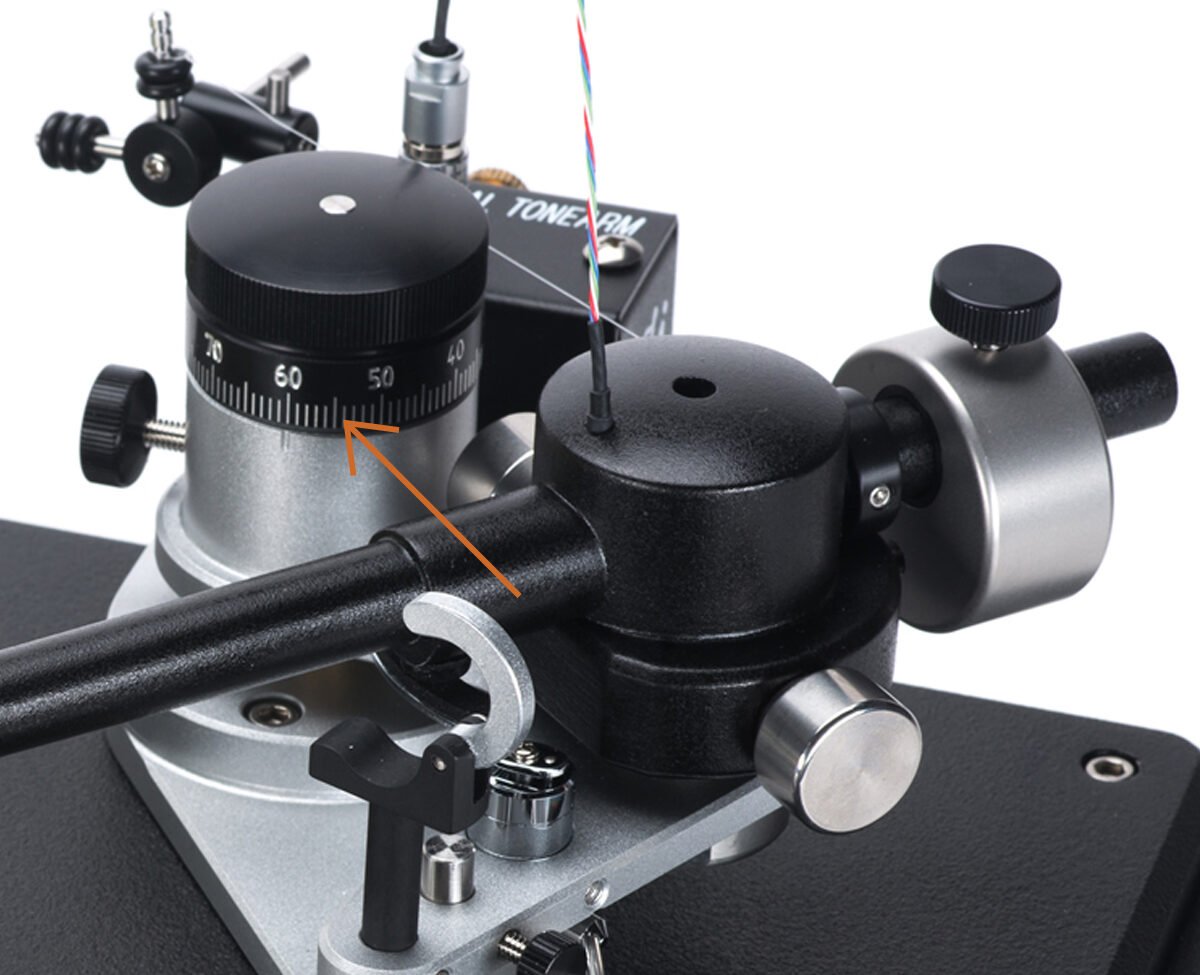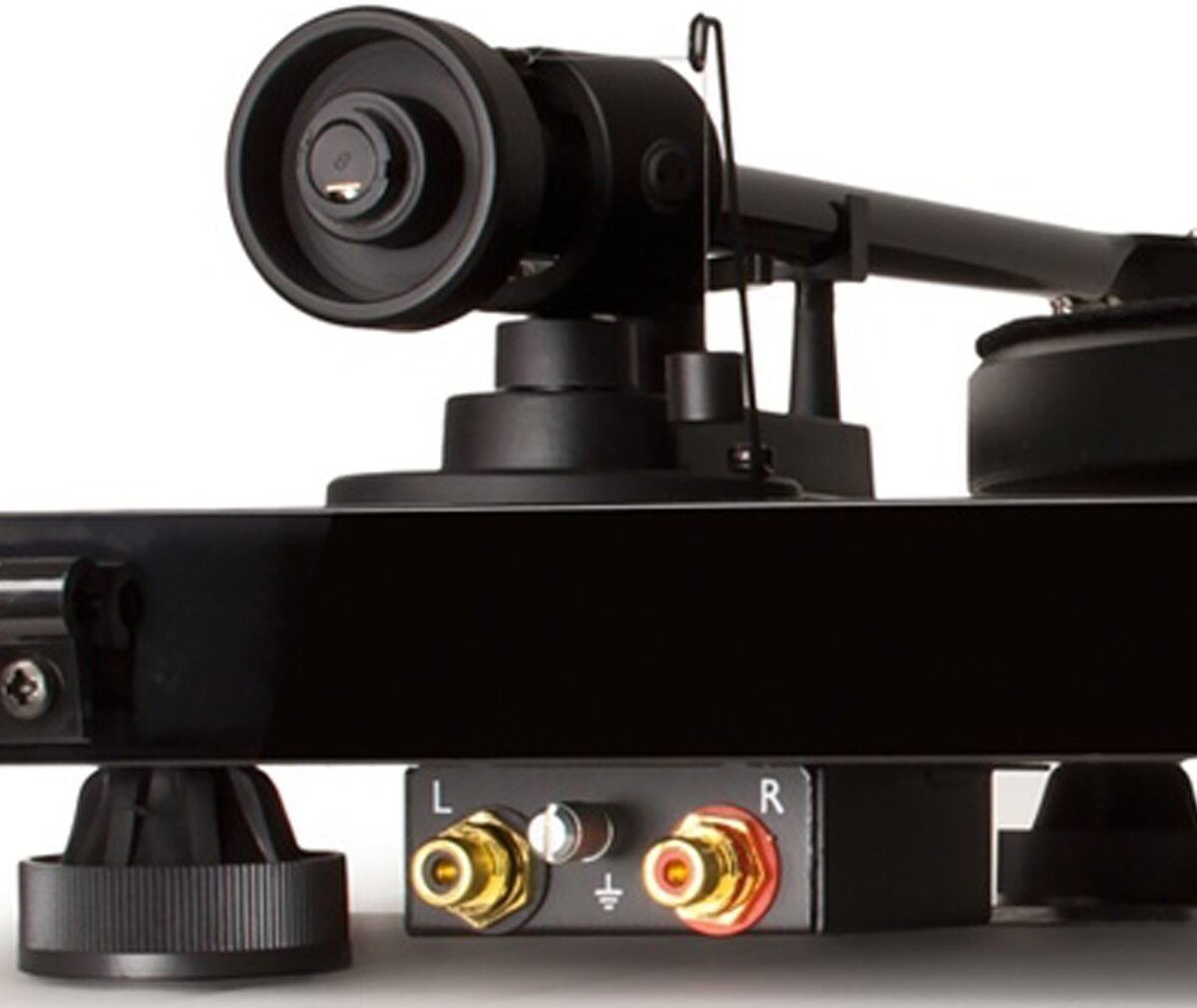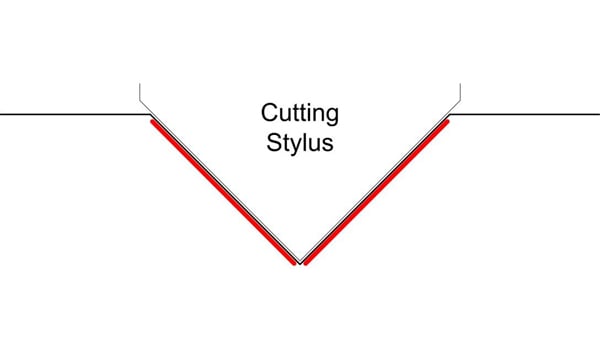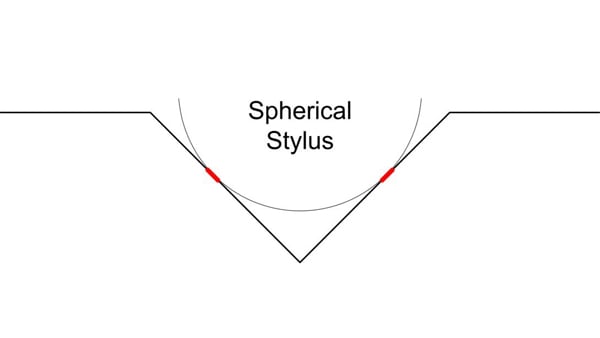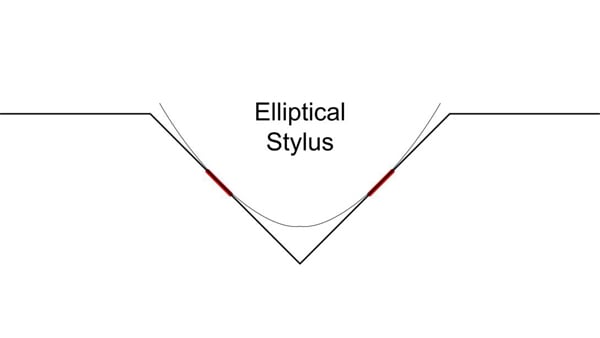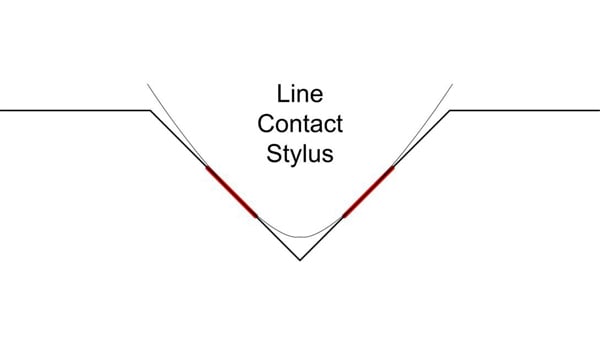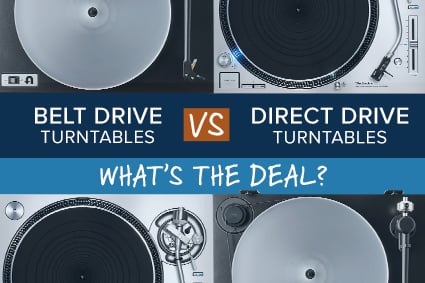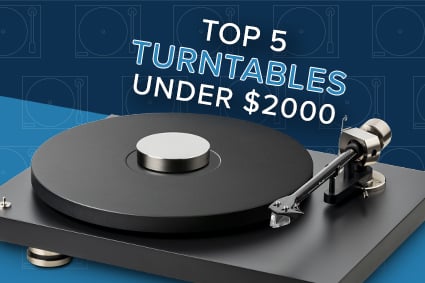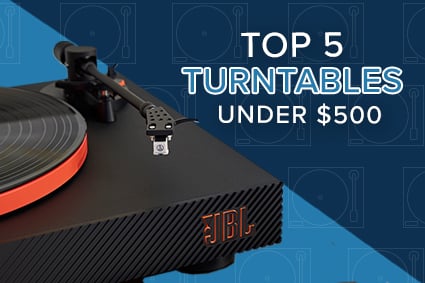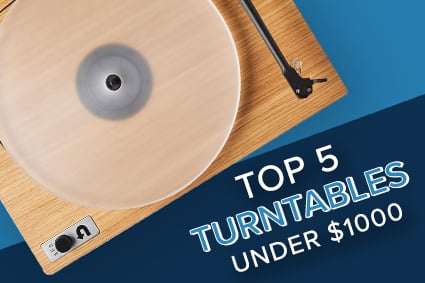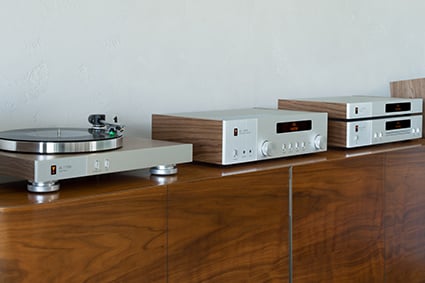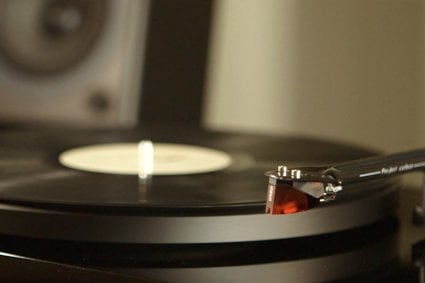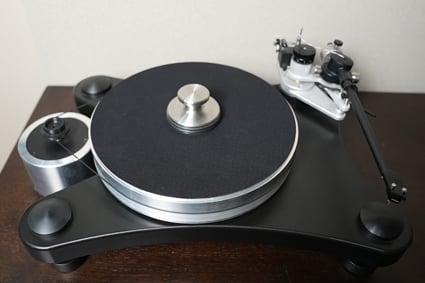Turntable Features
Tonearm
This holds the phono cartridge and moves it across the record.
Yes – Most turntables include the tonearm designed to work well with the turntable.
No – You must purchase a separate tonearm. There are a few specialty manufacturers that only make tonearms. You will find this option as you move up into the more high performance turntables.
TONEARM TYPE
Gimbal
Most tonearms fall into this category. Gimbal tonearms have separate bearings for the horizontal and vertical planes that move independently of each other. Better bearing systems will result in improved sound due to the lack of friction as the tonearm moves across the record.
Unipivot
A unipivot tonearm is free to move in all directions and has only one bearing. This is typically a tiny, pointed fixed bearing that sits in a cup. There are arguments on both sides of the unipivot audio debate table. Many say the lack of friction improves sound while others say the phono cartridge should not be free to move in all planes.
Audio Advice Tip
The technology on unipivot tonearms is now very good and, with proper setup, they offer great performance.
Removable Headshell
A removable headshell easily detaches from the tonearm.
Yes – Removable headshells aid in easier installation and convenience when swapping out cartridges. They are typically found on turntables used by DJs so an accidentally broken stylus will not slow down the party.
No – Since a removable headshell does not have as solid of a connection to the tonearm and can get slightly out of alignment, “NO” is considered better for most applications.
Comes with Cartridge
Yes – Many entry level turntables come with a decent cartridge as part of the package.
No – As you move up into the better performing turntables, a cartridge is not typically included. This allows you to take an older cartridge in good working order and install it on your new turntable or upgrade your existing turntable with a new cartridge. Almost all of the models that come with a cartridge still allow you the option of upgrading to a better one.
CARTRIDGE TYPE
See the Phono Cartridge section below for more details on the types of phono cartridges.
Anti-Skate Mechanism
As a record spins it pulls the cartridge and tonearm with it, creating greater force and pulling the cartridge to the inside of the record groove. Anti-skate mechanisms are used to apply an opposite force to pull the tonearm back to the center of the record groove. This is a critical step in the setup of your turntable. There is a relation to the tracking force and the amount of anti-skate that should be applied.
Audio Advice Tip
We use test gear to make sure the anti-skate mechanism is applied perfectly. Don’t worry, you’ll receive a setup tips that are specific to your new turntable.
Gravity
This method uses a weight attached via a thin string to the tonearm to pull it back towards the center.
Spring
A spring is used to apply the opposing force to move the cartridge back to the center of the record groove.
Magnetic
Magnets are used to move the cartridge back to the center of the record groove.

